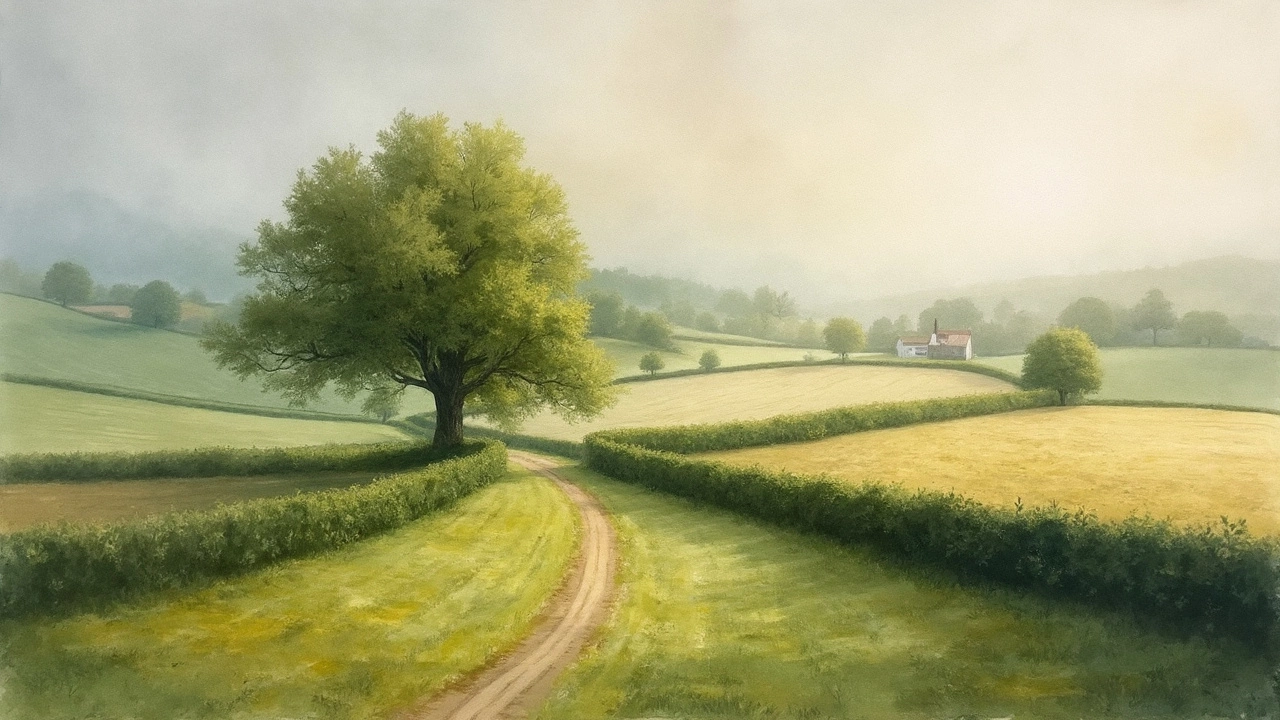Rule of Thirds Guide for Stunning Landscape Paintings
26 Jun 2025Discover how the rule of thirds shapes stunning landscape paintings, with practical tips, artist secrets, and visual examples for balanced, eye-catching art.
Continue reading...Ever felt a painting or photo looks a bit off, even when the subject is good? Chances are the composition isn’t balanced. The rule of thirds is a fast, easy tool that can fix that. Imagine a tic‑tac‑toe board over your canvas – placing key elements along those lines or at their intersections pulls the eye where you want it.
The grid splits the frame into nine equal parts with two vertical and two horizontal lines. Where the lines cross are the "power points". Human eyes naturally gravitate to these spots, so putting a main subject there makes the piece feel more natural.
Don’t overthink it – just turn on the grid overlay in your camera or draw faint lines on a sketch. Then ask: Is the focal point on a line or intersection? If it’s dead centre, try shifting it a little. Even a tiny move can add depth.
One common mistake is forcing everything onto the grid. The rule is a guide, not a law. Use it to create balance, then break it if the composition demands drama.
In landscape painting, place the horizon on the upper or lower third, not smack in the middle. This simple shift makes sky or ground dominate the mood. Our post “Best Colours for Landscape Painting” shows how colour choices work with this placement.
For portrait work, try aligning the subject’s eyes with the top horizontal line. It gives a natural headroom and makes the eyes pop. The article “Eyes in Portraits: Why Artist Focus Matters for Emotional Impact” dives deeper into that eye‑placement trick.
When you work with oil or acrylic, the rule still applies. Paint the main shape – a tree, a statue, a figure – on a power point, then let secondary elements fill the remaining space. This avoids a crowded look and lets each part breathe.
Even abstract art can benefit. Use the grid to guide where bold colour blocks land, creating tension or harmony without a recognizable subject. The piece “Abstract Painting: How to Begin Without Fearing the Blank Canvas” suggests using the grid to start simple.
Photography follows the same steps. Turn on the grid, line up your subject, and watch the frame feel more dynamic. If you’re shooting a concert, place the singer’s face on a power point and let the stage lights fill the rest.
Quick checklist:
Play with it. Snap a photo, paint a quick sketch, then compare the original with the rule‑adjusted version. You’ll notice a stronger pull, a clearer story, and less "meh" feeling.
Remember, the rule of thirds is a shortcut to good composition. Master it, then experiment – move the subject off the grid for tension, or stack multiple points for complex scenes. Either way, you’ll have a reliable tool to make every piece look intentional.
Ready to try? Grab your camera, open a sketchbook, or set up a canvas. Apply the grid, place your subject, and watch the difference. Your art will feel more balanced, and viewers will stay engaged longer.

Discover how the rule of thirds shapes stunning landscape paintings, with practical tips, artist secrets, and visual examples for balanced, eye-catching art.
Continue reading...